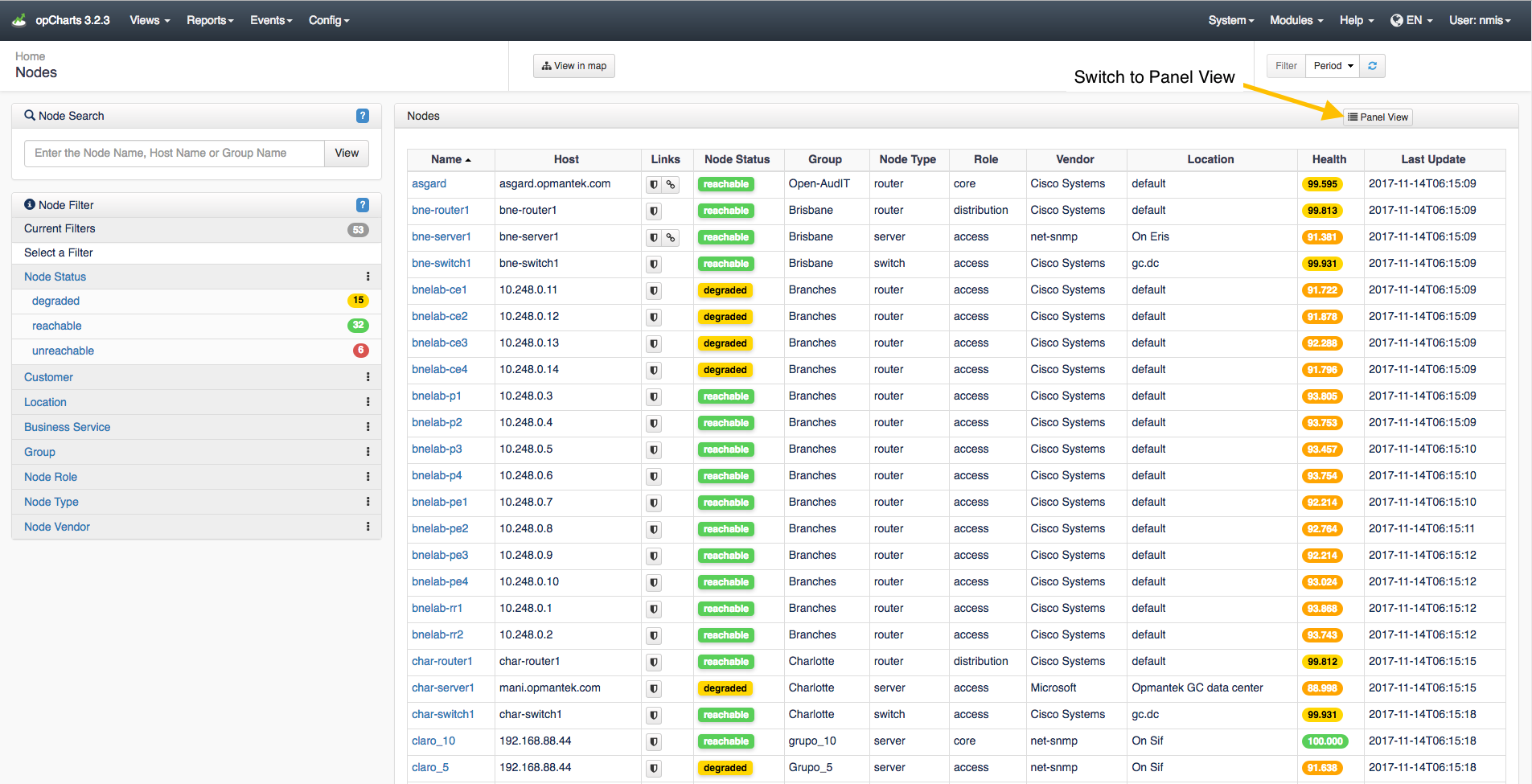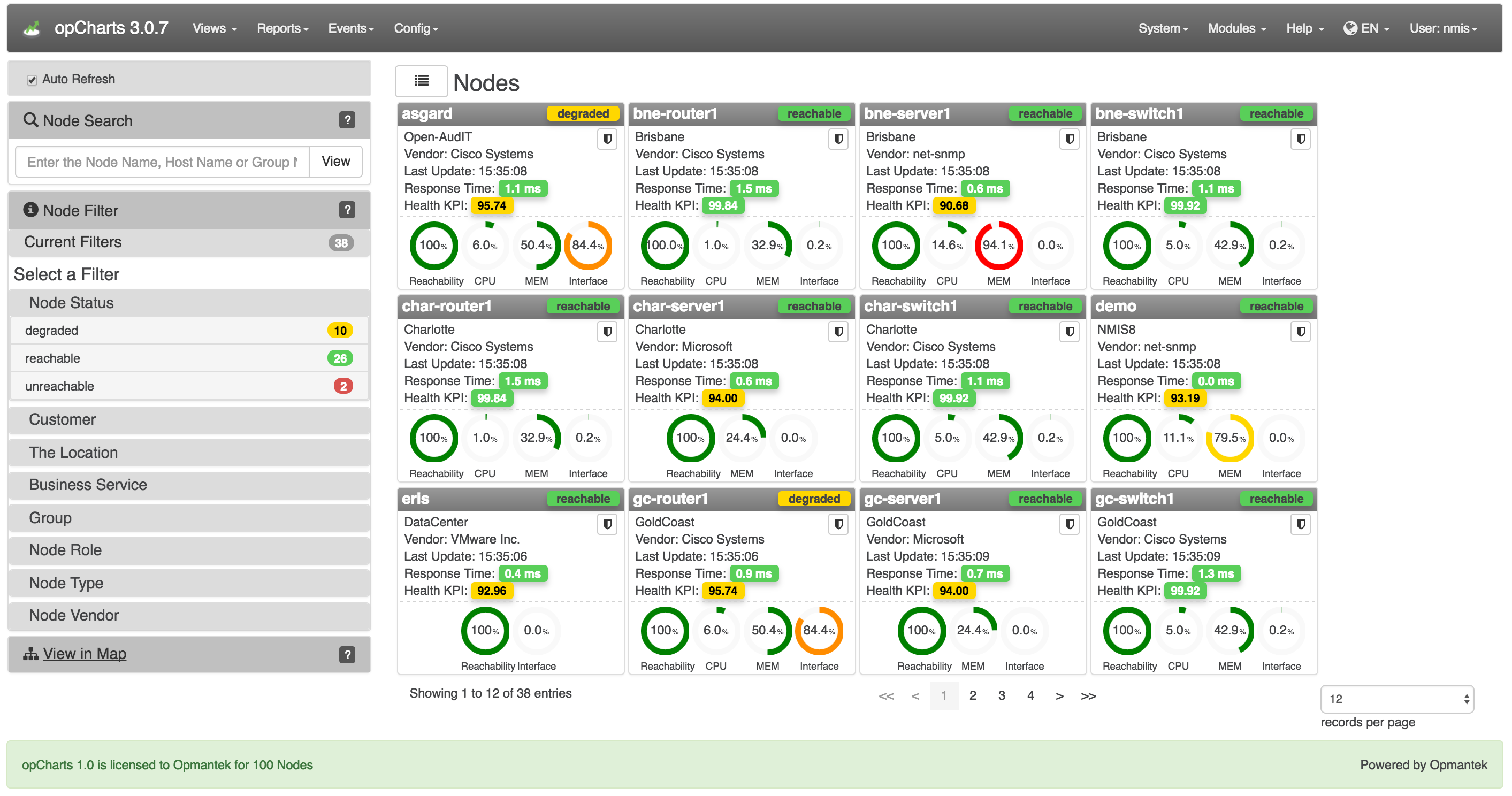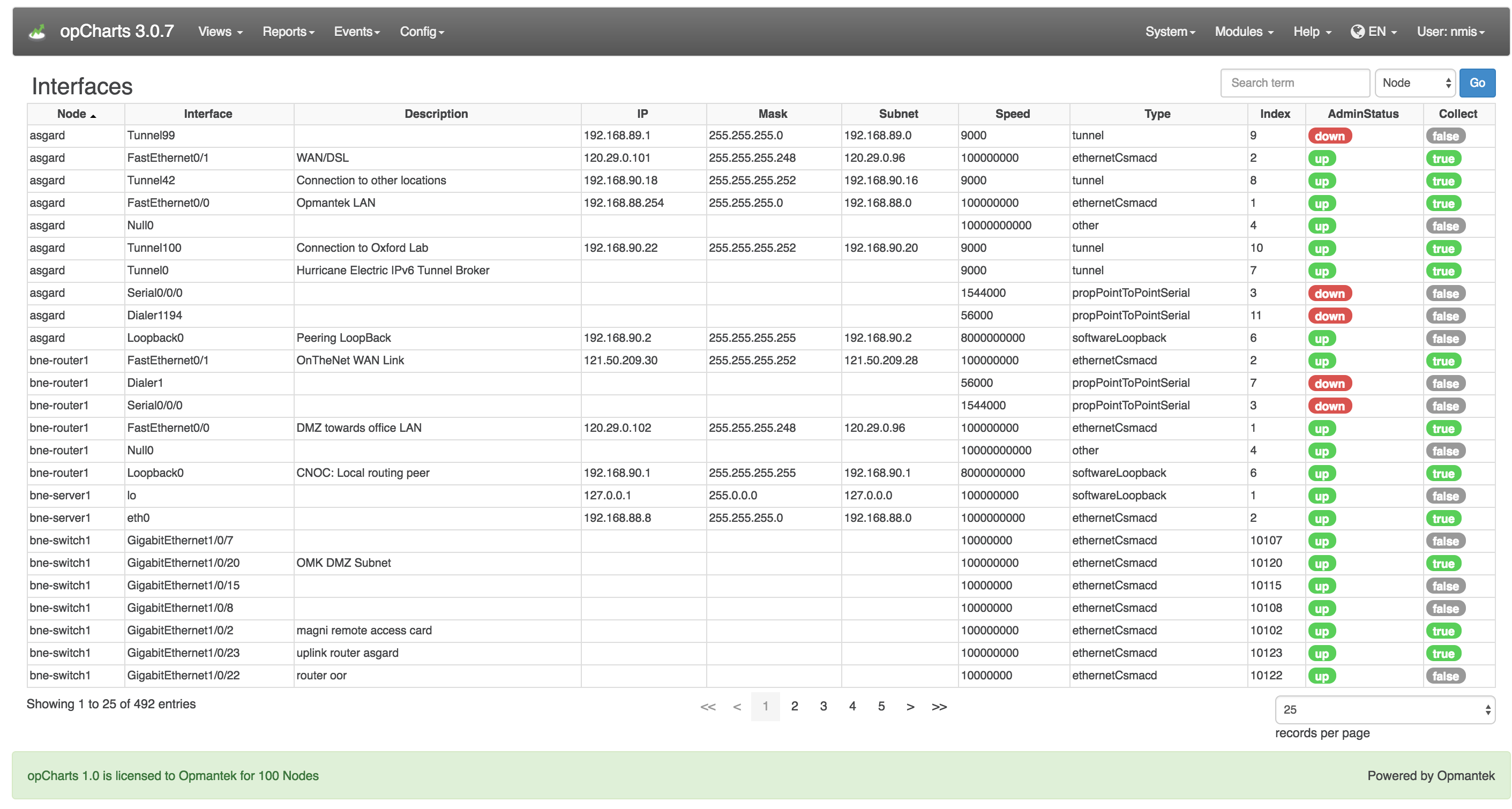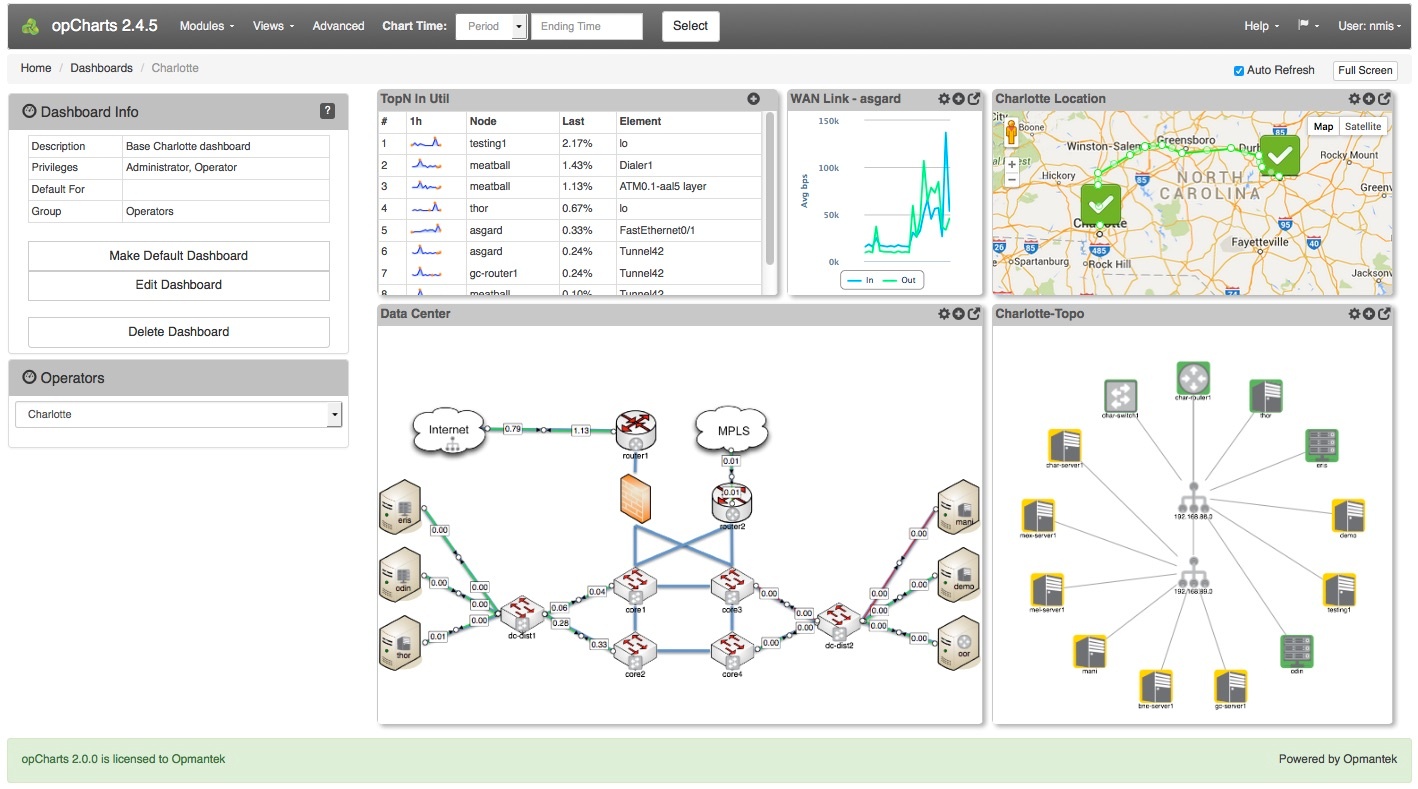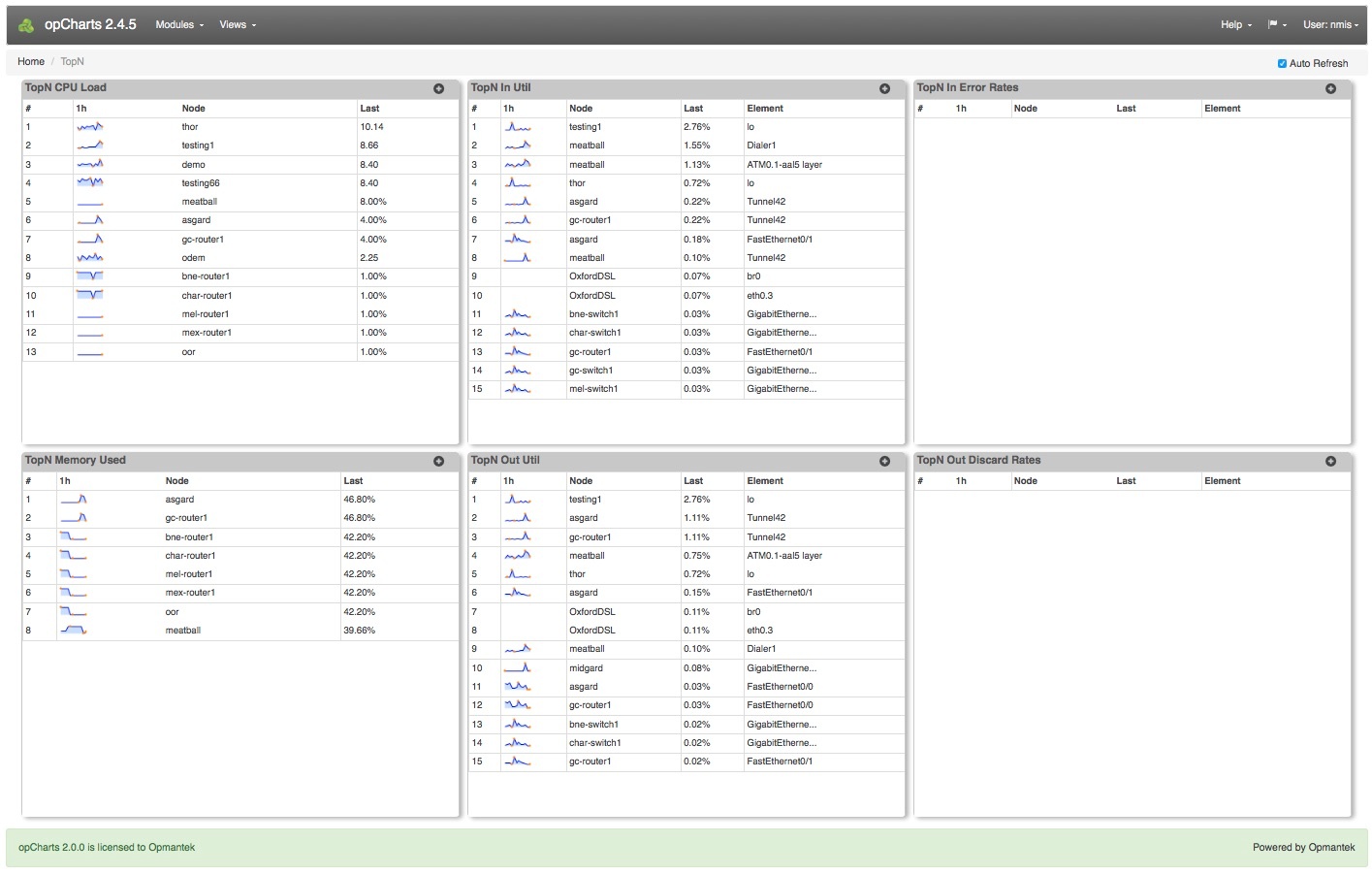Table of Contents
Introduction
Opmantek's opCharts module is an industry leading custom dashboard tool designed specifically to enable users to generate targeted, custom single-pane of glass views into the network's performance - both current and over time. Drawing data from NMIS as well as 3rd part party SQL databases, opCharts puts the power into the user's hands to build dynamic interfaces by combining Components into single or multilayer visual landscapes called Dashboards.
By abstracting data in into Key Performance Metrics, and combining and sorting devices into dynamic groups through user-defined metadata, opCharts can easilly easily support high-level abstracted user views at the 50,000 ft level while still allowing quick drill-down into detailed performance metrics for fast problem resolution.
Executive or technician - opCharts gives each user the power to easily organize and view their network's performance the way they want to see it.
Overview
opCharts supports two five primary views - Nodes and Dashboards: Nodes, Interfaces, Monitored Services, Dashboards, and TopN.
Nodes View
The To open the Nodes View can be opened , select Views -> Nodes from the opCharts menu using View -> Nodes. The Nodes View abstracts bar. By default, this displays a list of all nodes in your environment, but you can also select Panel View to abstract each nodes performance information into easy-to-understand panels. These panels include such information as the node name, node status, vendor, and key performance information regarding each node.
*Note* The Nodes view is the default view for opCharts unless a default Dashboard has been assigned to the user account.
Panel view
In this view each node is represented by a panel versus a line in a table. Each panel provides important information for the represented node. Some of this information is conveyed via dials. There are two options to chose from in regard to how data is displayed in the 'node panel dials'. Please refer to the administration guide in order to switch between the two panel dial options.
Node Panel Dial Display Options:
- KPI based
- Resource based
KPI based
In this mode the dials represent the health of the KPI being measured, higher ratings are more desirable. In the example below with the CPU at 4.3% utilization the KPI score is 95.7%; a desirable condition.
Dashboard View
If a KPI value is below the desired standard the dial will turn red.
Resource based
In this mode the dial represents the amount of resource consumption. In the example below the CPU utilization for asgard is at 6%; a desirable and the dial is green. The memory usage of bne-server1 is at 94.1%; an undesirable condition and the dial is red.
Interfaces View
To open the Interfaces View, select Views -> Interfaces from the opCharts menu bar (Views → Inventory in opCharts 4). This view provides an easy-to-search list of all interfaces in your environment. From here, the user can drill down into the details of individual nodes and interfaces.
Monitored Services View
To open the Monitored Services View, select Views -> Monitored Services from the opCharts menu bar. Services can be filtered by groups such as node status and group and as of opCharts 3.2.2 you can do a search of the monitored services list.
Dashboards View
To list all available Dashboards, select Views -> Dashboards from the opCharts menu barThe Dashboard Menu, listing all available Dashboards, can be opened from the opCharts menu using View -> Dashboard. From there, the user can select to create a New Dashboard, and View/Edit/Delete an existing Dashboard.
TopN View
The open the TopN View, select Views -> TopN from the opCharts menu bar. The TopN view is actually a collection, or predefined dashboard, comprised of six opCharts Components. Any of these TopN charts can each be added to a new or existing Dashboard (see: Dashboards for more information) to create custom views. The small graphs for each TopN are called "sparklines", they give you an impression of the full graph which you can see by clicking on the TopN.
Detail Pages
Please see these additional pages for more detailed information on using opCharts.
| Children Display | ||
|---|---|---|
|

